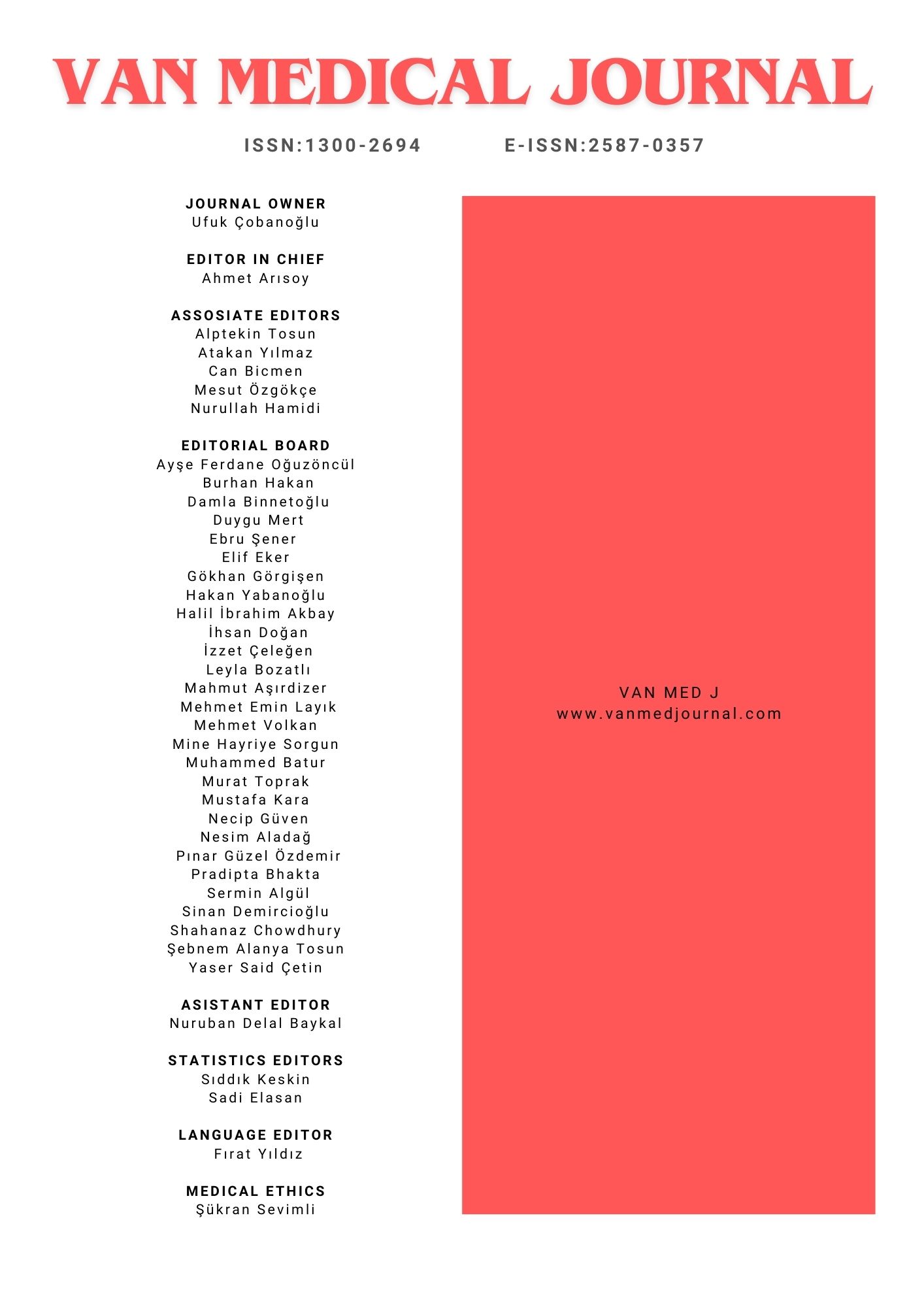Cervical Meningomyelocele - Single Center Experience
Mehmet Edip Akyol, Ozkan ArabaciDepartment of Neurosurgery, Van Yüzüncü Yıl University Faculty of Medicine, Van, TurkeyINTRODUCTION: Cervical meningomyelocele (MMC) is rarely seen compared to lumbosacral and thoracolumbar meningomyelocele. There are only a few series related to cervical MMC in the literature. This study presents one of the most extensive series of cervical meningomyelocele, reviewing its clinical features, surgical management, and management strategies.
METHODS: A total of 520 spina bifida patients, 25 of whom were diagnosed with cervical meningomyelocele, from January 2010 to September 2022, were included in the study.
RESULTS: 88% (22) of the patients included in the study were newborns. The mean age was 3 days. Of the patients, 52% (13) were female and 48% (12) were male. The most common sites of cervical meningomyelocele were C4-C5, C5-C6, and C7-T1 regions with similar rates of 24%. There was a cranial anomaly in 56% (14) of the patients. The most common cranial anomalies were Chiari II with 24% (6), hydrocephalus, and Chiari type II with hydrocephalus and syringomyelia with 16% (4). All patients underwent surgical resection of the sac and intradural exploration.
DISCUSSION AND CONCLUSION: Cervical meningomyelocele is structurally and clinically different from thoracolumbar and lumbosacral meningomyelocele and has more favorable outcomes after surgery. Preoperative magnetic resonance imaging and detailed patient evaluation are recommended to identify the cervical meningomyelocele's sac and spinal cord structure and additional anomalies. Surgical treatment should be done early and intradural exploration is recommended in addition to resection of the sac.
Servikal Meningomyelosel - Tek Merkezli Deneyimi
Mehmet Edip Akyol, Ozkan ArabaciVan Yüzüncü Yıl Üniversitesi Tip Fakültesi, Nörosirürji Ana Bilim Dali, VanGİRİŞ ve AMAÇ: Servikal meningomyelosel (MMS), lumbosakral ve torakalomber meningomyelosellere göre nadir görülür. Literatürde, servikal MMS ile ilgili sadece birkaç seri bulunmaktadır. Bu çalışma, en geniş servikal meningomyelosel serilerinden birini sunarak klinik özelliklerini, cerrahi tedavisini ve yönetim stratejilerini gözden geçirmektedir.
YÖNTEM ve GEREÇLER: Çalışmaya Ocak 2010'dan Eylül 2022'ye kadar 25’ine servikal meningomyelosel tanısı konulan toplam 520 spina bifida hastası dahil edildi.
BULGULAR: Çalışmaya alınan hastaların %88’i (22) yenidoğandı. Yaş ortalamaları 3 gündü. Hastaların %52’si (13) kadın, %48’i (12) erkekti. Servikal meningomyeloselin en sık görüldüğü bölgeler %24’lük benzer oranlarla C4-C5, C5-C6 ve C7-T1 bölgeleriydi. Hastaların %56’sında (14) kranial anomali mevcuttu. En sık görünen kranial anomaliler %24 (6) ile Chiari tip II, hidrosefali ve %16 (4) ile Chiari tip II, hidrosefali, sringomiyeli idi. Tüm hastalara kesenin cerrahi rezeksiyonu ve intradural eksplorasyon uygulandı.
TARTIŞMA ve SONUÇ: Servikal meningomyelosel, torakolomber ve lumbosakral meningomyeloselerden yapısal ve klinik olarak farklılık gösterir ve cerrahi sonrası daha olumlu sonuçları vardır. Servikal meningomyeloselin kese ve spinal kord yapısı ile ek anomalileri tanımlamak için cerrahi öncesi manyetik rezonas görüntüleme yapılması ve hastanın detaylı değerlendirilmesi önerilir. Cerrahi tedavi erken yapılmalı ve kesenin rezeksiyonuna ek olarak intradural eksplorasyonu yapılması önerilir.
Corresponding Author: Mehmet Edip Akyol, Türkiye
Manuscript Language: English

